Part 1: Bowhunting a new whitetail property
Part 1 of our three part series brings you through the journey of the First season on a new property.

Whether you own your own land, lease a farm, or just have permission to hunt a whitetail property you now have more tools than ever to optimize the quality of your deer hunt.
In this 3-part series I am going to bring you through my process of evaluating, designing, and hunting a new property using land I just acquired in Ohio. This series will focus on these areas:
Part 1 - Designing for maximum deer health and activity
Part 2 - Learning through scouting and Inventory
Part 3 - Results and evaluation.
But first, some reality. This is not an exact science. There can be fifty different options and they may all work. To make things more complicated, deer are individuals. What works for mature bucks now may not work for mature bucks three years from now. I don’t pretend my method is best. In fact, I am going to review it in Part 3 and tell you what I got right, and more importantly - what I got wrong. As always, we’d love to hear your opinions on what you would do given this property layout. What I can assure you is that I've been doing this for 30 years. I have a good track record for evaluating and improving properties. More importantly, I have made lots of mistakes and learned from all of them.
Before you do anything, you have to be honest about your goals: Are you looking to kill a trophy buck? Do you want to provide lots of shot opportunities for you and your friends? Are you interested in creating a diverse landscape that's decent for small and big game hunting?
For our purposes I am only interested in whitetails. My objectives are very simple, and they are always the same regardless whether I managing a property in Ohio or Connecticut:
1. maximize deer nutrition
2. maximize attraction
3. maximize trophy hunting opportunities
One of the most effective strategy for improving a property is by planting food plots. A diversity of food provides nutrition and attraction. It will dramatically improve your hunting. However, planting food plots assume you can make changes to a property. This is always the case when you own property. If you lease property, or just have permission to hunt a farm, then you will need to secure permission to make these changes.
Before I ever step foot on a property, I am studying it on HuntStand.com. This is the best tool I’ve found to mark land features, map out potential designs, and then carry those designs in the field. I will spend hours on this step. Typically, I get to a point where I think I have it nailed down, and then scrap all of it when I get into the field. This part is important. Using mapping tools is not enough. Boots on the ground is necessary.
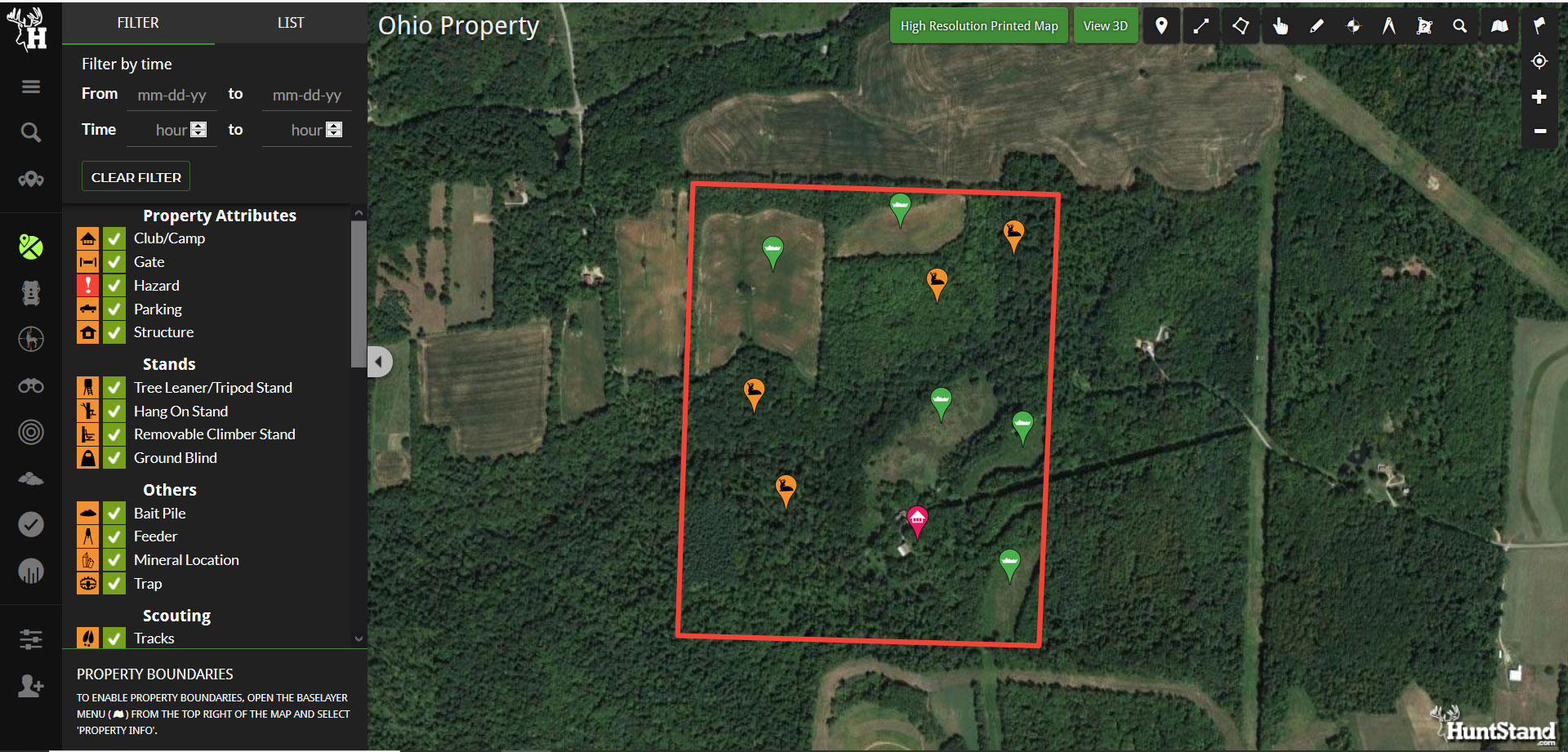
Here’s a view of the new hunting property. What I really liked about this parcel was the terrain, tillable fields, thickets, and the opportunity to access both morning and afternoon stands using existing terrain. The key here will be a carefully thought out food plot and access design so that’s where I will begin.
Plot Strategy
Unlike ground I own in New York, this property needed no significant changes. It required no clearing, no roads to cut, and had a good mix of tillable acreage, bedding cover, water and access. This was a relief since I had lots of work ahead of me - getting my plots in. After staring at maps, walking the ground, looking at last years’ sign, and talking with neighbors I decided on the crops below.
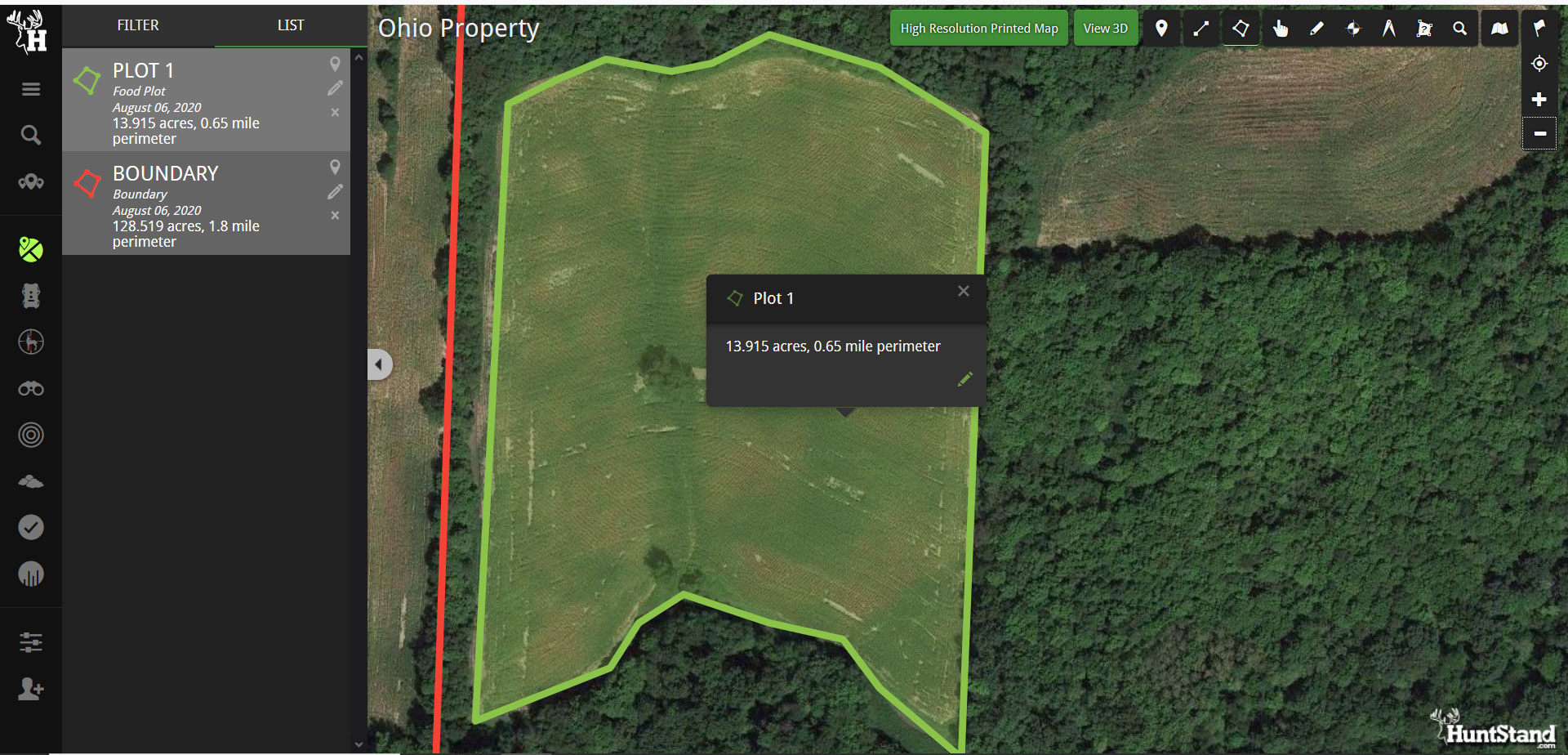
Plot 1 - 14 acres mostly open.
I decided to plant my big plot almost entirely in soybeans. I am running four different varieties here, one in each one of my John Deere 4-row planter bins. My first bin is Eagle Big Fellow, my 2nd position is Eagle Manager’s Mix, my third bin is Hancock Buckbeans, and my last bin is inexpensive Ag beans. All of these beans are Roundup Ready. While the beans are the primary crop, I am planting a small staging area plot in alfalfa and brassicas in the southeast and northeast corners.
Rationale - Given the size of this field the deer will not be able to browse it down. I can leave this field unfenced. This allows me to draw summer bucks and providing all deer with excellent nutrition. Since I own this property, I can also leave all my beans standing.
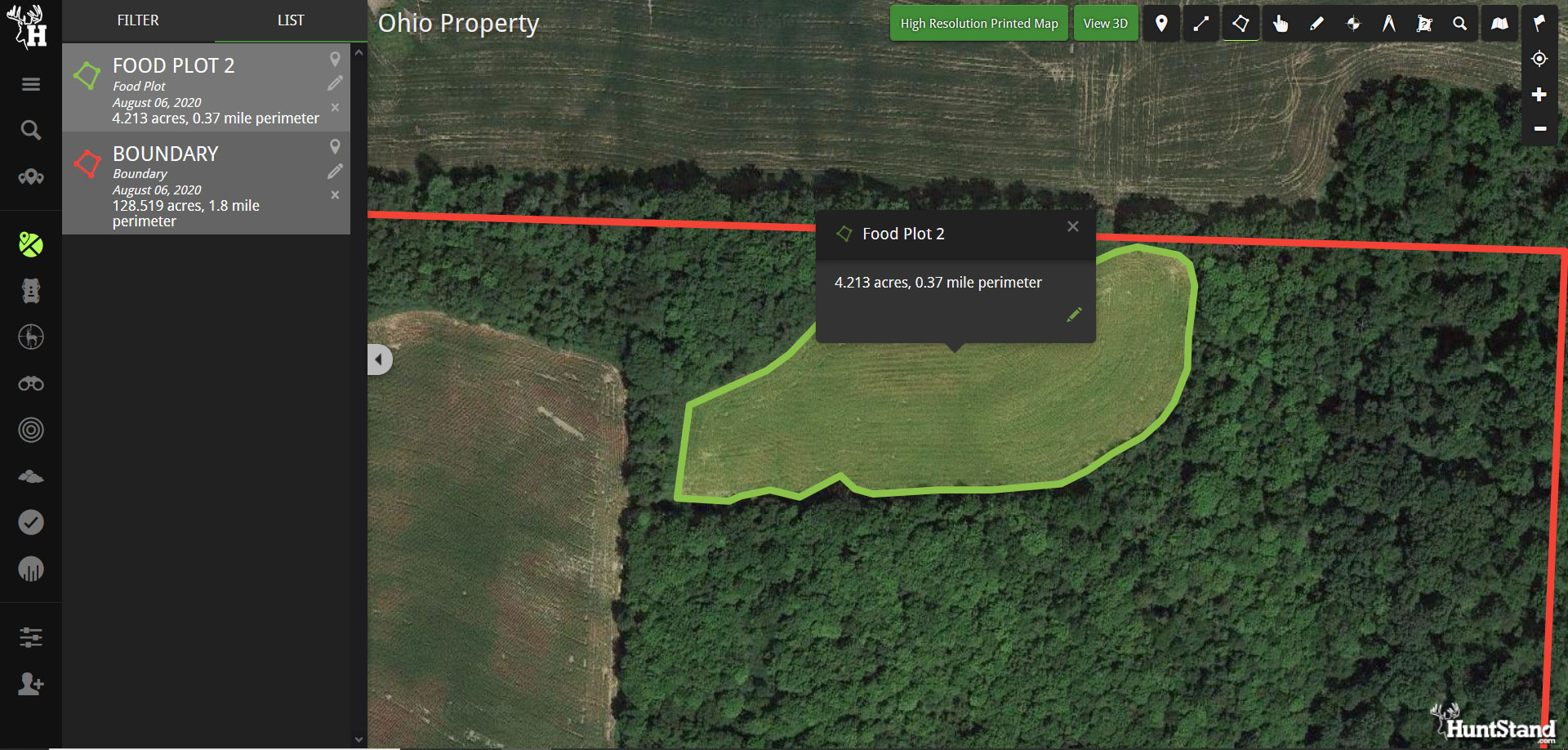
Plot 2 - 4 acres mostly open
Based on the density of rubs and scrapes here, I decided that this smaller northeast field would be my kill plot. I cut this field in two, with the west side planted in a combination of Eagle Manager’s Mix soybeans, and Hancock Buckbeans. I e-fenced my beans to encourage full bean production. On the east side I kept a plot of clover/chicory that was planted by the prior owner.
Rationale - The clover and chicory provide a good crop for does and small bucks, it also allows for crop diversity. I am guessing that the bigger bucks will move between the big bean field and this smaller one to check does. I also am betting this field will be a staging area for the big field in the evening. This will provide great stand options for east, south, and north wind.
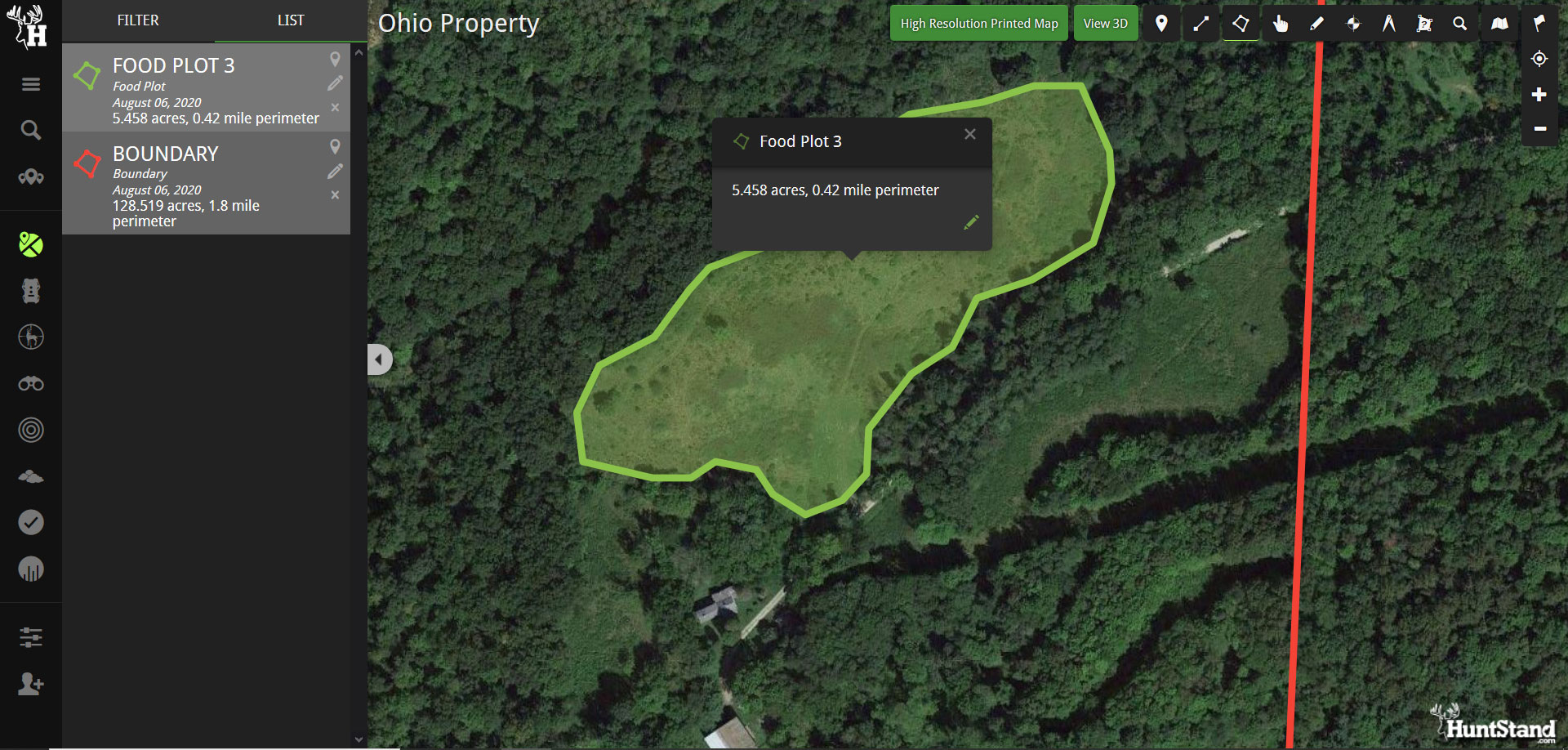
Plot 3 - 6 acres
This former pasture field has good fertile soil, and a nice layout. I am going with straight perennial clover (Hancock Killer Clover) for all 6 acres.
Rationale - The challenge with this field is that the farmhouse on the property overlooks the west side of this field and the road into the house runs along the north tree belt. I want something here that will nourish the deer, but I do not want a top drawing crop. I also want a soil building, low maintenance perennial where nothing more than mowing is required. Clover is always a good choice for these requirements.
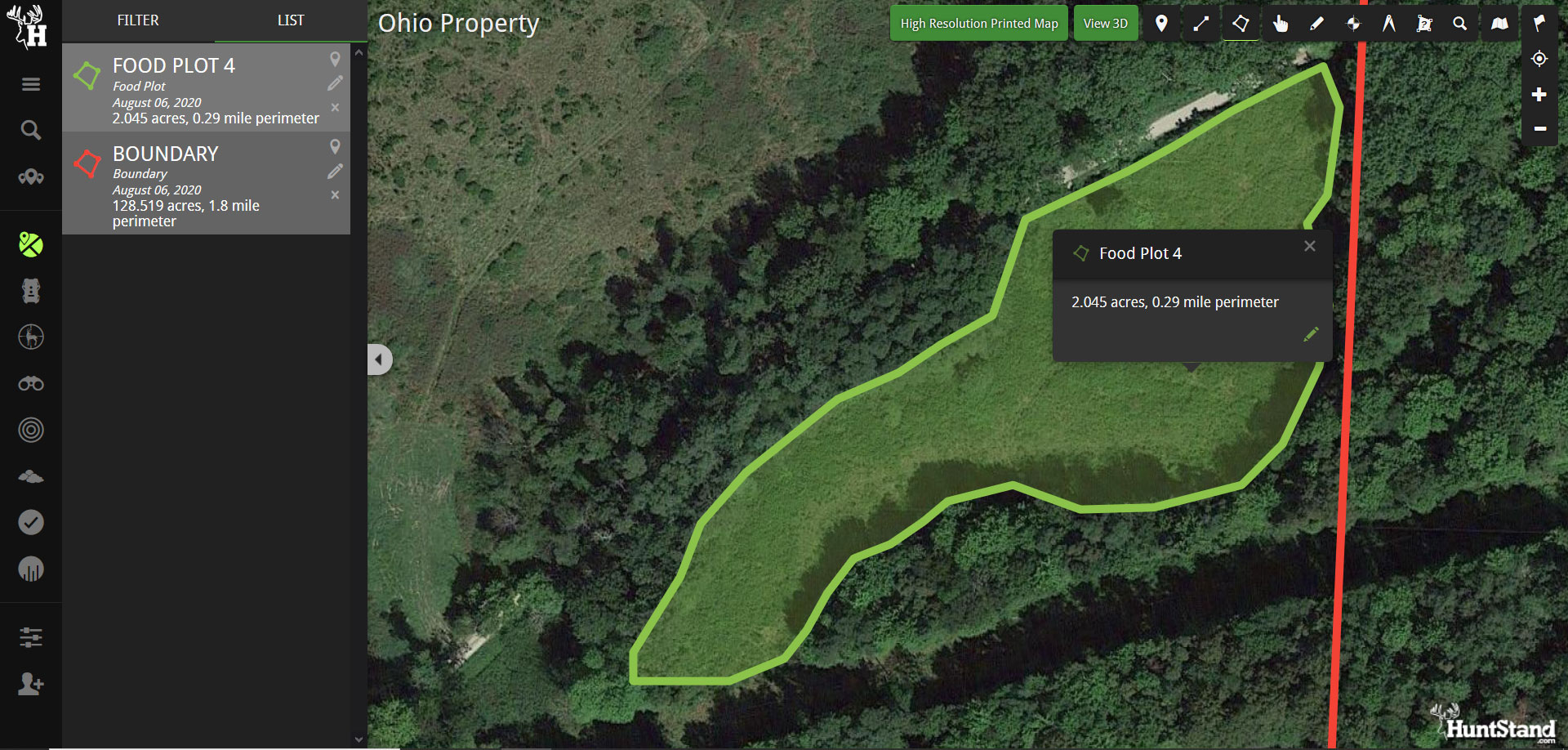
Plot 4 - 4 acres
I am planting a blend of clover, chicory, and a small amount of alfalfa.
Rationale - I have the same dilemma on this field, but it is more secluded than Plot 3 so again, these plots are not designed as kill plots or top draws. But I may use this plot for doe kills. I want this field optimized for nutrition and low maintenance, just like plot 3 except with a bit more variety.
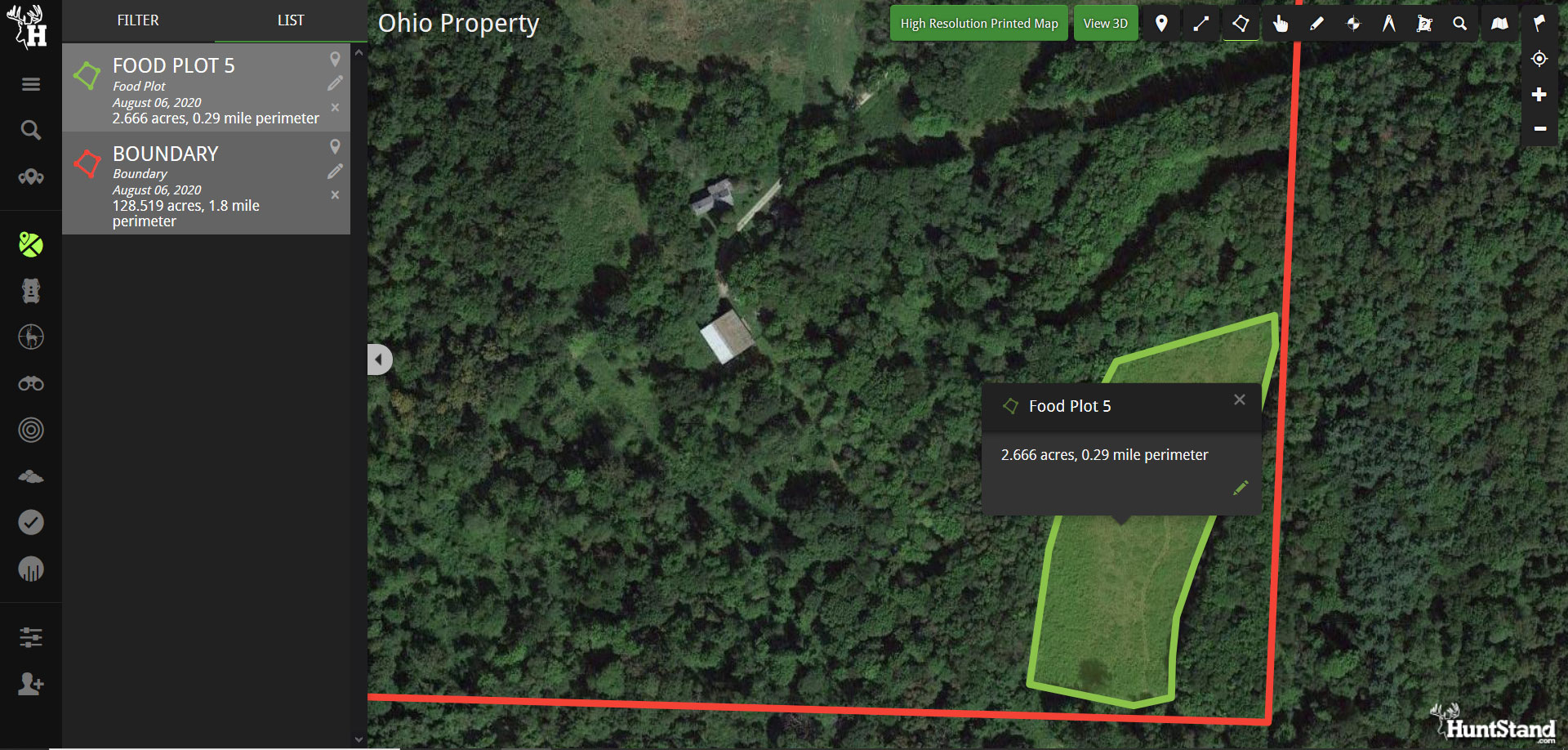
Plot 5 - 3 acres
This field will be planted with a brassica, cereal grain, and clover blend and provides a good south wind option.
Rationale - This field sits on my border. I do not know if the neighbors' hunt this section of their woods. It is a nice secluded location with lots of trails and old rubs. I am a little nervous about planting a plot right on the neighbor’s border as I might be doing them a favor, but for this year I’m going to risk it. I will re-evaluate this decision in 2021.
Access strategy
Now that I my food plot design is done; I am planning for access. We will not be hanging stands until after the scouting phase in late summer, but at this point I have enough data to narrow down general areas for stands.
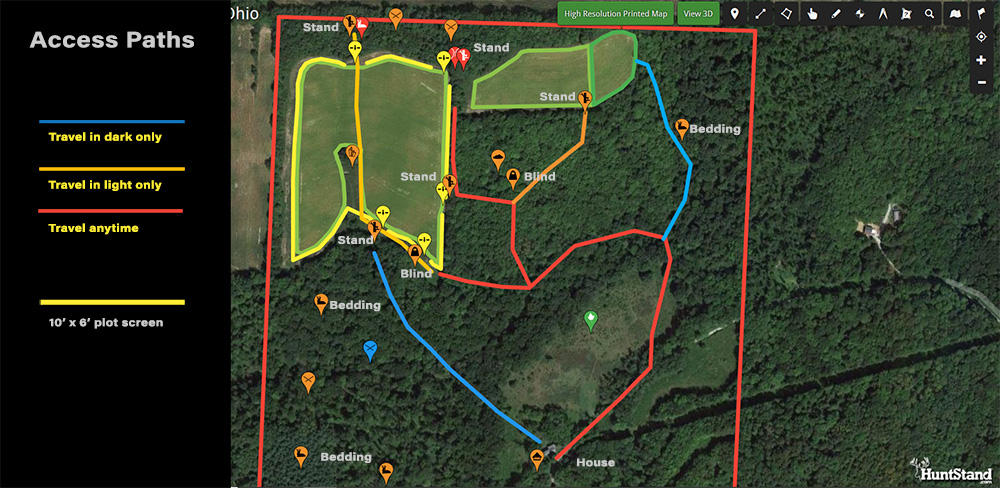
Again, a combination starting with HuntStand, followed by boots on the ground is critical. Since access requires two main factors - wind direction and where the deer are when you are moving to and from stands, it is important to plan for those variables. I determined that one of the best afternoon stand locations will bring me along the edge of our big bean field. It will be easy getting into the stand in daylight, but tricky getting out at night. My best option is planting a screen. I picked Hancock’s Sunn Hemp and Egyptian Wheat for this purpose. Corn and Sorghum is also an option.
Field screens are not my only option. I can also cut trails through the timber and thickets. Early august is the best time to blaze trails to likely stand areas. My preference is to move in fields during daylight, and timber in the dark. Again, we will fine tune exact stand locations later, we just need to get access into the area.
I map out the routes on HuntStand and the rest is on foot. All access starts from a farm road. Then I follow the mapped trail on my HuntStand app until I reach the general stand area. The entire time I am fine-tuning the path. Once I’ve determined the optimal route, I come back to the farm road and grab my chain saw, weed whacker, hedge trimmers and trail reflectors.
This access step is critical. Sometimes you get lucky and one access path will work for both morning and evening hunts - along with varying wind directions. But most of the time you will need a different option for each variable. Sometimes, it is inevitable that there is no way to get to a stand in the morning or exit a stand in the evening without educating deer. However, I have found that a creative access strategy that utilizes terrain, and the use of plot screens, provides access options you never thought possible.
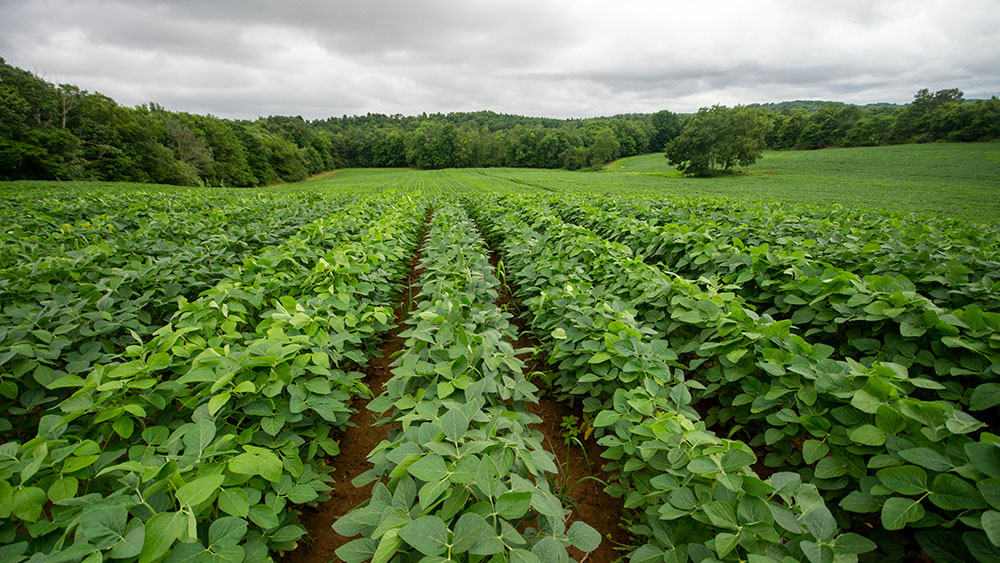
To this point we have discussed a lot of work that requires a level of control over the property. What happens if you lease, or simply have permission to hunt a farmer’s 80-acre cornfield? While you do not have the same amount of latitude, you would be surprised how many landowners are open to the idea of improving the deer hunting on their ground. In many states, whitetail ground is more sale-able than farm ground. The landowner is aware of this. He may even let you use his equipment for planting a 3-acre bean field, or better yet - plant it for you. And most farmers will not mind you cutting in a path to access a treestand. While you are certainly limited in a lease or permit situation, you still have options.
We hope you enjoyed Part 1 of this feature. In part 2 we go much deeper into scouting. We will discuss advanced trail camera techniques (for both inventory and identify deer travel preferences) and we will spend time watching our fields utilizing old school, field scouting techniques.




